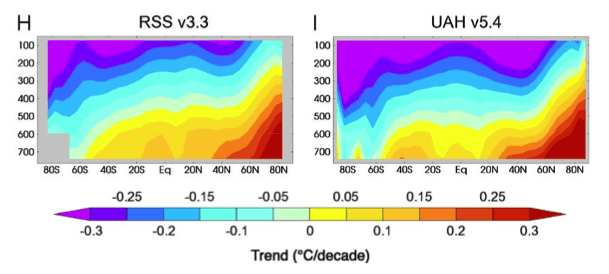
Factually Inaccurate : No estimate of 20th century climate forcings (warming or cooling influences) shows the solar forcing to be close to the effect of increased CO2.

REVIEW
CLAIM: Solar forcings are not too small to explain twentieth century warming. In fact, their effect could be equal to or greater than the effect of CO2 in the atmosphere.
Timothy Osborn, Professor, University of East Anglia, and Director of Research, Climatic Research Unit:
There is strong evidence that solar forcing cannot explain much of the observed warming at all. The “fingerprint” of solar forcing does not match the observed changes at all, neither over time nor space. Solar forcing would warm both the stratosphere and the surface of the Earth, whereas CO2 warms the surface (and the troposphere) but cools the stratosphere. Using radiosondes and (more recently) satellites, we have observed a warming surface and troposphere together with a cooling stratosphere. See Santer et al (2013)* for one of many studies providing this evidence.
 Figure – Zonal-mean atmospheric temperature trends in satellite observations from January 1979 to December 2012 showing warming of the lower atmosphere (troposphere) and cooling of the upper-atmosphere (stratosphere), from Santer et al (2013)*
Figure – Zonal-mean atmospheric temperature trends in satellite observations from January 1979 to December 2012 showing warming of the lower atmosphere (troposphere) and cooling of the upper-atmosphere (stratosphere), from Santer et al (2013)*
- Santer et al (2013) Human and natural influences on the changing thermal structure of the atmosphere, PNAS
Britta Voss, Postdoctoral Research fellow, U.S. Geological Survey:
Solar forcing is much smaller than CO2 forcing. As this figure from the latest IPCC report shows, CO2 radiative forcing (1.68 W/m2) dwarfs solar forcing (0.05 W/m2). Along with other greenhouse gases, CO2 dominates the total radiative forcing when all positive and negative factors are taken into account.
Figure – Radiative forcing estimates in 2011 relative to 1750. Values are global average radiative forcing, partitioned according to the emitted compounds or processes that result in a combination of drivers. Source IPCC AR5
Peter deMenocal, Professor, Lamont-Doherty Earth Observatory, Columbia University, and Director, Center for Climate and Life:
This is untrue. Solar forcing in the visible spectrum is far too small to explain recent warming. Furthermore solar variability would suggest a cooling trend more recently whereas the Earth is clearly warmed.



